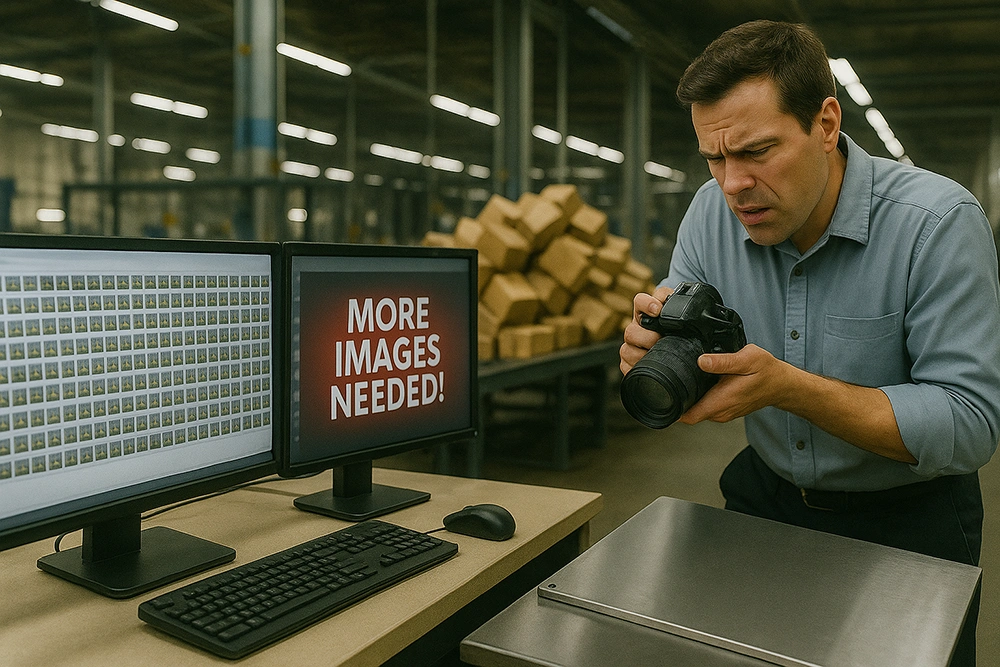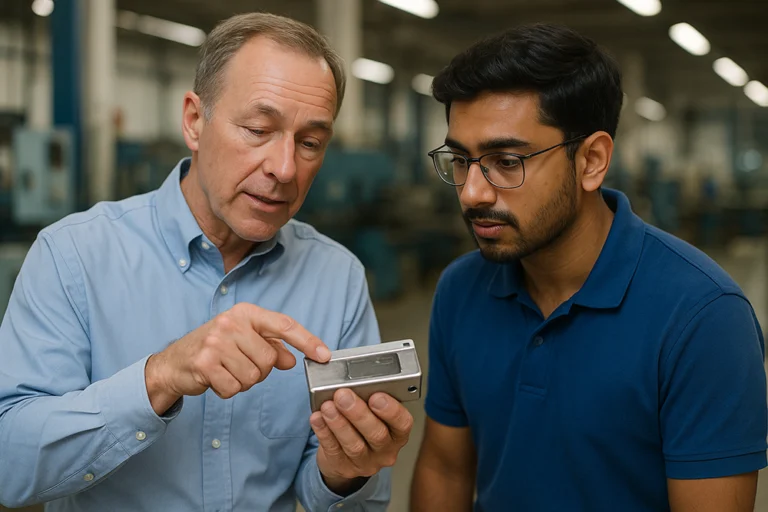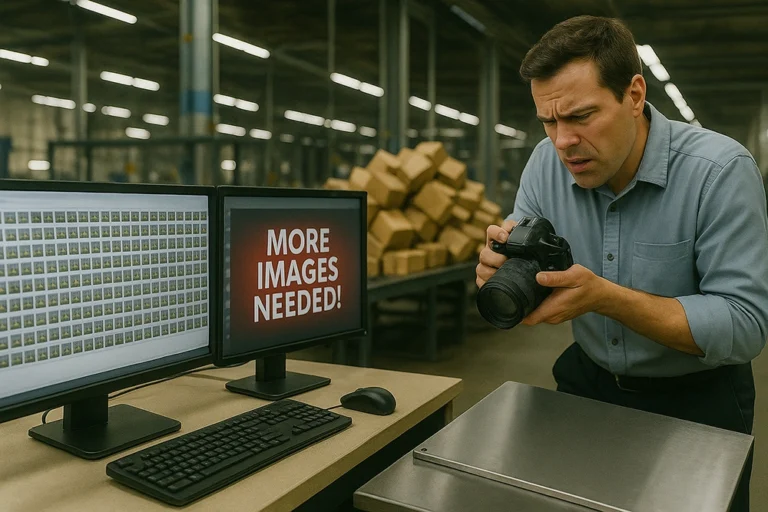Every day, plant engineers kick off machine vision pilots confident that “once we collect enough defect images, the AI will just work.” Six months later, that same team is still manually labeling edge-case photos only to see the model drift when the next product variant rolls in. If you’ve been there, you know how data scarcity and variability can grind a vision AI initiative to a halt.
In this post, we’ll unpack the true costs of data hunting and why classic computer vision often falls short on parts with high variation. Then we’ll show how Zetamotion’s Spectron™ platform leverages synthetic data and generative AI to bypass weeks of labeling, accelerate SKU onboarding, and learn rapidly toward enterprise-grade accuracy so you see ROI faster.
The Hidden Hours Behind “Enough” Training Data
Building a reliable AI inspection model starts with images – lots of them. Yet, gathering and labeling thousands of defect photos eats up engineering and QA resources:
- Photo hunts on the line: QA teams pause production to capture defects under varied lighting, angles, and tolerances.
- Manual labeling backlogs: Trained staff spend 3–5 minutes per image drawing defect masks and categorizing severity.
- Data drift: New batches often look different—fresh mold lines, ambient lighting shifts, or material variations introduce unanticipated edge cases.
Industry surveys find that up to 50% of an AI project’s budget goes toward data preparation and that’s before you test on real line conditions. By the time you’ve labeled 1,000 images, your product spec has already changed, sending you back to square one.
Why Classic Vision AI Fails on High Variability
Traditional rule-based systems and even data-hungry neural nets struggle when parts don’t look identical:
- Threshold tuning: A fixed brightness or color threshold that catches a scratch on one batch flags harmless texture changes on the next.
- Template matching: Comparing new images to stored “good” templates fails when parts have slight shape or finish differences.
- Overfitting risks: Deep models trained on limited real data memorize rather than generalize, leading to high false-reject rates on unseen variants.
It’s like asking a new QC hire who’s seen only one part sample to inspect 50 different designs on day one. No matter how sharp your rules are, you’ll hit a wall when variation exceeds your labeled dataset.
Breaking the Vision AI Data Barrier with Synthetic Data
Imagine if, instead of chasing photos on the line, you could generate thousands of realistic defect scenarios with a few clicks. That’s the promise of synthetic data, and it’s at the core of Spectron™’s rapid onboarding:
- Virtual defect catalog: Define your defect types once—cracks, scratches, contamination—and let the system render 1,000+ variants under different lighting and textures.
- No manual labeling: Each virtual image comes with ground-truth masks and metadata, so your AI model sees perfect examples from day one.
- Continuous variation: Add new CAD files or tweak defect parameters, and Spectron’s generator instantly supplies fresh training sets.
By simulating line conditions in software, you bypass physical setup hours and edge-case capture hunts. Teams often see up to 80% reduction in data prep time, clearing the path to model validation in under 48 hours.
Learn more in our Synthetic Data for Inspection pillar.
Accelerated Onboarding & Rapid Learning
Synthetic data solves the cold-start problem, but real lines have real-world quirks. Spectron™ provides a complete hardware-software bundle for fast deployment and continuous improvement:
- Pre-configured imaging kit: High-resolution cameras with built-in, adaptive lighting.
- One-click synthetic generation: Define new SKUs and defect classes, then generate full training sets.
- Live validation & retraining: Run parts at line speed, capture any misclassifications, and feed them back into Spectron’s adaptive learning engine.
Rather than promising unrealistic “99% accuracy on day one,” we emphasize how Spectron™ learns fast. In most cases, customers achieve high-90s accuracy within days and continuously refine toward 99.99% as the system ingests real-line feedback. Rapid learning means you see meaningful ROI on your production metrics much sooner.
For details on deployment support, see our AI Visual Inspection Services.
Next Steps
Overcoming data scarcity doesn’t have to drain your team’s time or budget. With Zetamotion’s Spectron™ platform, you can leapfrog traditional data hunts and fast-track your vision AI rollout.
👉 Ready to see synthetic data in action?
See Spectron in action and schedule your hands-on demo today.




